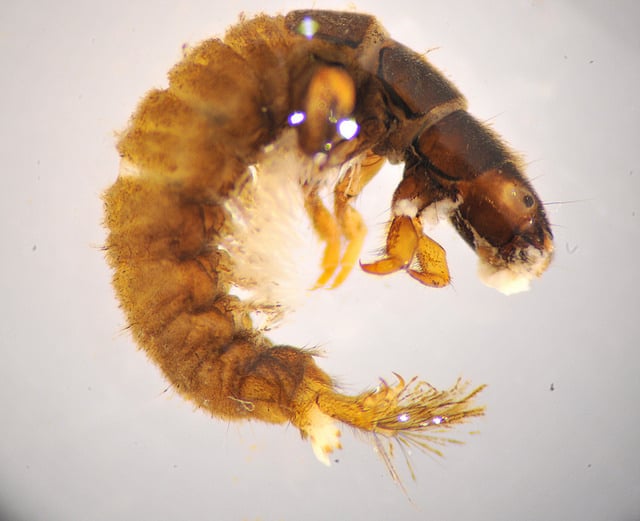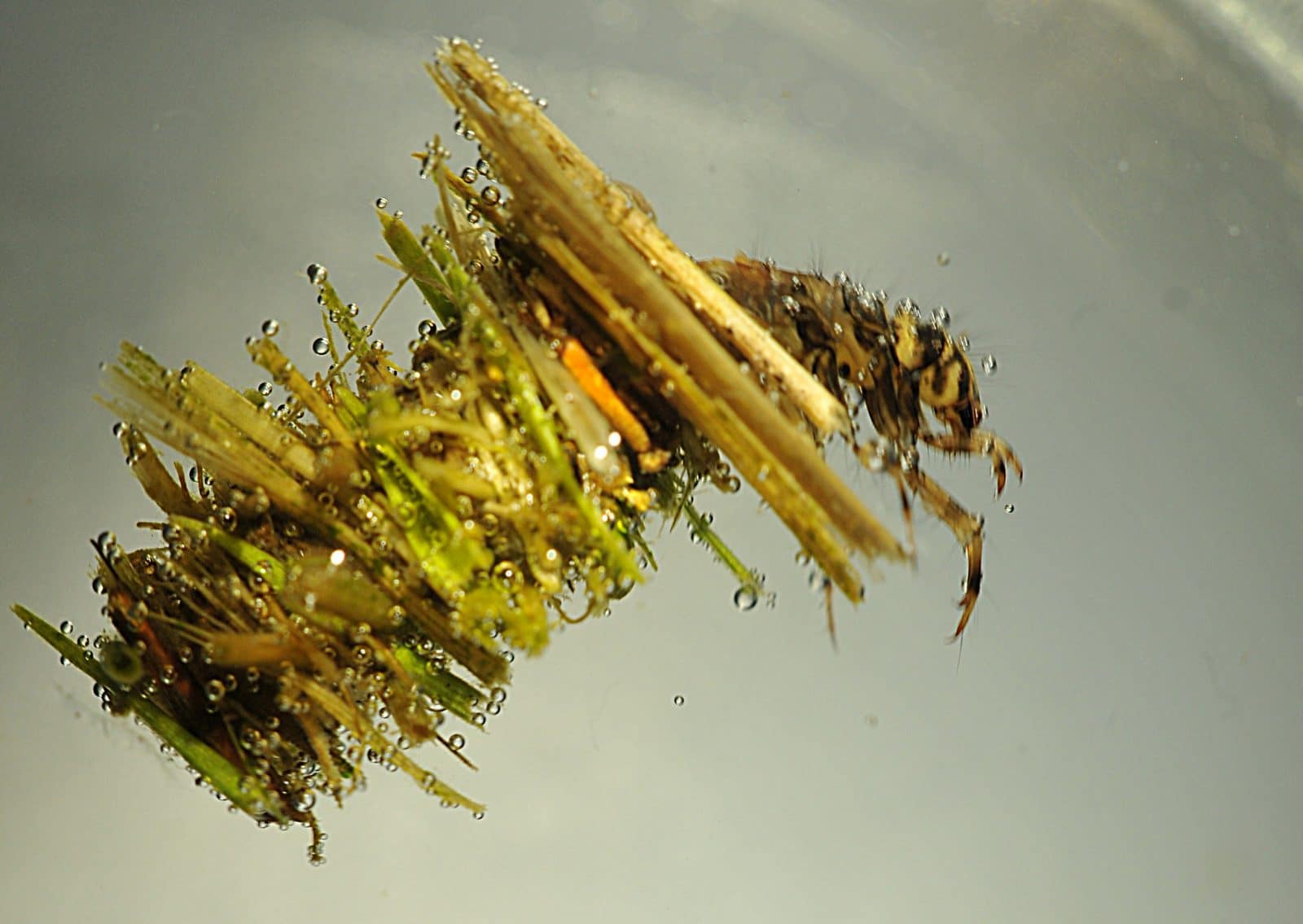- 1400 species in 21 families in North America
- A key group in assessing water quality using macroinvertebrates
- Most (but not all) are relatively sensitive to pollution
| Phylum: | Arthropoda |
| Class: | Insecta |
| Order: | Trichoptera |
Identification Tips:
Larvae
• Many build cases of sand, twigs or organic debris
• Body catarpillar-like, with 6 legs near the front
• Abdomen soft
• Head covered in hardened capsule
• Pair of claws attached to leg-like structures on end of abdomen
• 2 to 25 mm length
Adults
• Flying insects with long antennae
• Wings extend beyond the rear of the abdomen and fold, tent-like, over the body
Life History:
• Larvae produce silk from a gland on lower lip d for use in attachment, filter feeding, and/or constructing cases
• Occupy all types of freshwater habitats, but are most diverse in medium sized rivers
• Some mobile in cases, some attach their cases to rocks and filter feed, one family is free living without a case
• Some feed on detritus, others on plants, some are predatory.
• Larval stage lasts 2 months to 2 years depending on species
• Larvae seal their case or build a cocoon in which to metamorphose into the adult
• Adults live for about 30 days
• They forage at night for nectar and are usually found on vegetation near water during the day
| POLLUTION TOLERANCE | ||||
| Very Sensitive | Somewhat Sensitive | Facultative | Somewhat Tolerant | Very Tolerant |
| Most | Most | Some | Some | |
| Pollution Indicator | One of the 'EPT ' groups (Trichoptera) commonly used as indicators of good water quality |
––––––
Primary Information Source:
Voshell, J. Reese. 2002. A Guide to Common Freshwater Invertebrates of North America. McDonald and Woodward Publishing Company. Blacksburg, Virginia.



